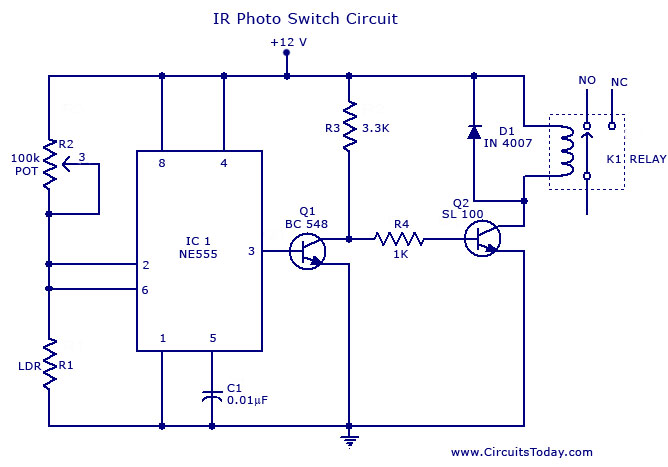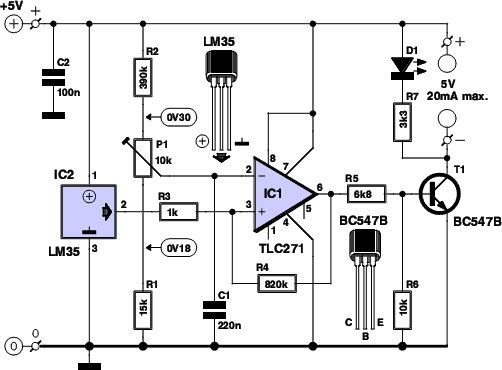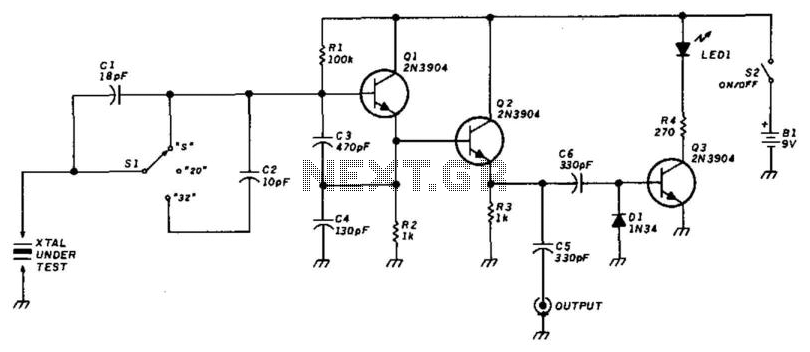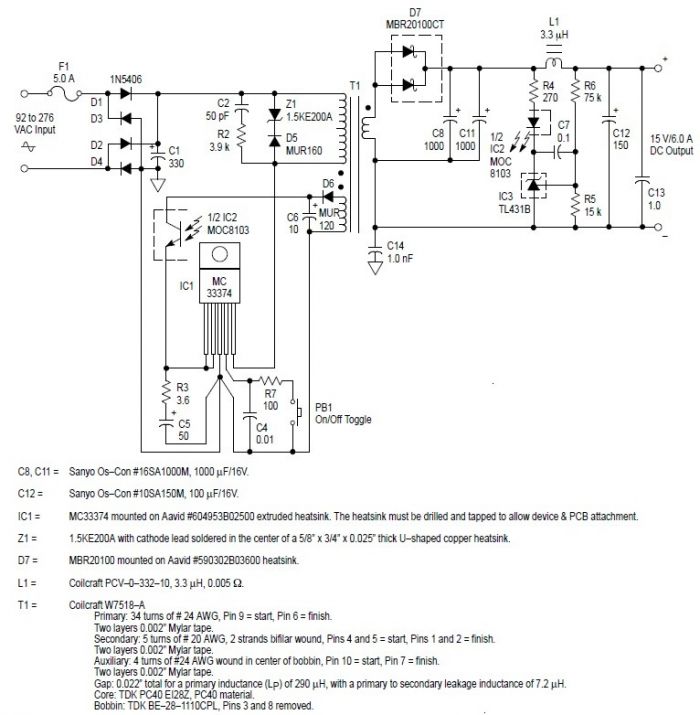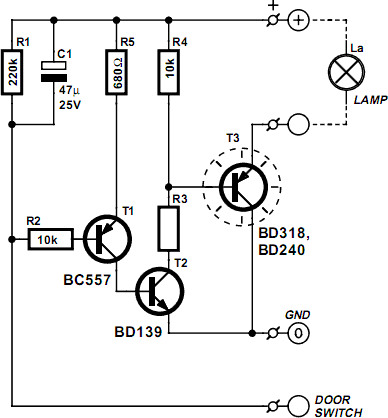
Precision Narrow-Band Tone Switch
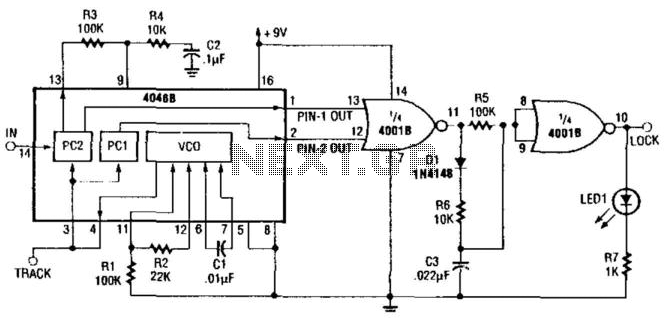
This signal tracker and lock detector combine to create a precision tone switch. The filter composed of R3, R4, and C2 determines the signal capture and tracking range, as well as the settling time. The maximum VCO frequency is influenced by R, while the minimum VCO frequency is affected by the voltage at pin 9. The minimum voltage at pin 9 is 0 V, while the maximum is VDD. In the lock detector, the phase comparator (PC) outputs pulses whose width is proportional to the phase difference between the two PC inputs. When locked, the two PC outputs are nearly mirror images of each other. The output of IC1A remains low while IC1B is high, which activates LED1. If the loop is not locked, the LED will not illuminate.
The described circuit integrates a signal tracker and a lock detector to function as a precision tone switch. The components R3, R4, and C2 form a filter that plays a critical role in defining the signal capture and tracking range, as well as the settling time of the system. The voltage-controlled oscillator (VCO) frequency is adjustable, with the maximum frequency determined by a resistor denoted as R, while the minimum frequency is controlled by the voltage level at pin 9 of the circuit. This pin can range from 0 V to VDD, providing flexibility in frequency modulation.
The lock detector employs a phase comparator (PC) that generates output pulses. The width of these pulses is directly proportional to the phase difference between the two inputs to the comparator. A significant characteristic of the lock condition is that the outputs of the phase comparator become nearly mirror images of each other when the system is locked. In this state, the output of operational amplifier IC1A is low, while the output of IC1B is high. This configuration triggers the illumination of LED1, serving as an indicator of the locked state. Conversely, if the loop is not locked, LED1 will remain off, providing a clear visual cue regarding the operational status of the system.
This design can be utilized in various applications where precise tone switching is necessary, such as in communication systems, audio processing, and signal modulation tasks. The ability to adjust the VCO frequency and the responsive nature of the lock detector ensures that the circuit can adapt to different signal conditions and requirements. This signal tracker and lock detector combine to make a precision tone switch. Filter R3/R4/C2 determines signal capture and tracking range, as well as settling time. Max. VCO frequency: R& Min. VCO frequency: + Pin 9 voltage affects both. The minimum at pin 9 is 0 V and the maximum at pin 9 is VDD. In the lock detector, the PC (phase comparator) outputs are pulses whose width is proportional to the phase difference between the two PC inputs. At lock up, the two PC outputs are almost mirror images. The output of IC1A remains low and IC1B is high. This lights LED1. If the loop is unlocked, the LED will not light.
The described circuit integrates a signal tracker and a lock detector to function as a precision tone switch. The components R3, R4, and C2 form a filter that plays a critical role in defining the signal capture and tracking range, as well as the settling time of the system. The voltage-controlled oscillator (VCO) frequency is adjustable, with the maximum frequency determined by a resistor denoted as R, while the minimum frequency is controlled by the voltage level at pin 9 of the circuit. This pin can range from 0 V to VDD, providing flexibility in frequency modulation.
The lock detector employs a phase comparator (PC) that generates output pulses. The width of these pulses is directly proportional to the phase difference between the two inputs to the comparator. A significant characteristic of the lock condition is that the outputs of the phase comparator become nearly mirror images of each other when the system is locked. In this state, the output of operational amplifier IC1A is low, while the output of IC1B is high. This configuration triggers the illumination of LED1, serving as an indicator of the locked state. Conversely, if the loop is not locked, LED1 will remain off, providing a clear visual cue regarding the operational status of the system.
This design can be utilized in various applications where precise tone switching is necessary, such as in communication systems, audio processing, and signal modulation tasks. The ability to adjust the VCO frequency and the responsive nature of the lock detector ensures that the circuit can adapt to different signal conditions and requirements. This signal tracker and lock detector combine to make a precision tone switch. Filter R3/R4/C2 determines signal capture and tracking range, as well as settling time. Max. VCO frequency: R& Min. VCO frequency: + Pin 9 voltage affects both. The minimum at pin 9 is 0 V and the maximum at pin 9 is VDD. In the lock detector, the PC (phase comparator) outputs are pulses whose width is proportional to the phase difference between the two PC inputs. At lock up, the two PC outputs are almost mirror images. The output of IC1A remains low and IC1B is high. This lights LED1. If the loop is unlocked, the LED will not light.
